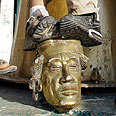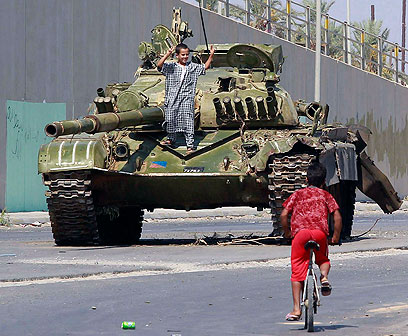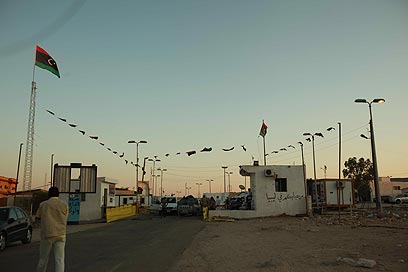
A wind of change blows in Libya
Special Ynet report from Libya, where residents try to instill order after months of chaotic revolution as Gaddafi's regime reaches endgame
Months of violent clashes appear to have done good to the civil-war torn nation. In the early days of the revolution, when I arrived in Libya from the Egyptian border, chaos and confusion were prevalent. Everything seemed much more orderly now, and it wasn't the work of the armies, the air forces or the NATO consultants.
Related stories:
- Gaddafi in radio statement vows to 'win or die'
- Rebel leader: Gaddafi to be tried in Libya, elections in 8 months
- Rebels storm Gaddafi compound
- West anxious over Libya's chemical weapons cashes
It seems like the revolution integrated the Libyans into a coordinated unit - as it often happens when people fight for their independence.
While the coast is still being controlled by forces loyal to the embattled leader, Muammar Gaddafi, the southern border, which is connected by a winding road to Zintan, is open and is quite safe.
Breath of relief
As night fell, trucks arrived at the crossing to distribute yoghurt and dates to break the Ramadan fast.
At the border, they told us that the Bab al-Aziziya compound had been seized by the rebels and that Gaddafi had disappeared, but his supporters continued to fight in some of Tripoli's districts. Sirte, Gaddafi's home town, has yet to be conquered.
Dozens of journalists swarmed the border crossing in a rush to reach the capital. An excited jumble of languages – Japanese, Russian, Turkish, Spanish, Italian – sounded from every direction. No one, not even the BBC's John Simpson, could say what is transpiring beyond the mountains.
The roads were open as we drove in the dark. Sleepy guards greeted us at the three checkpoints we passed before we reached Nalut, where the liberated Libya's first communications center has been established.
Only in Nalut did we see the first signs of battle; muddied trucks, machine guns and ancient antitank launchers. The communications hub was scattered with the remnants of shells, bullets and bombs fired in battle – a war museum of sorts.
While enclaves of resistance are scattered here and there, the nation that has decided to topple its government has already done so, and residents of the liberated zones finally have a chance to breath with relief.
Tsur Shezaf is Ynet's Correspondent in Libya
- Follow Ynetnews on Facebook
- Receive Ynetnews updates directly to your desktop












